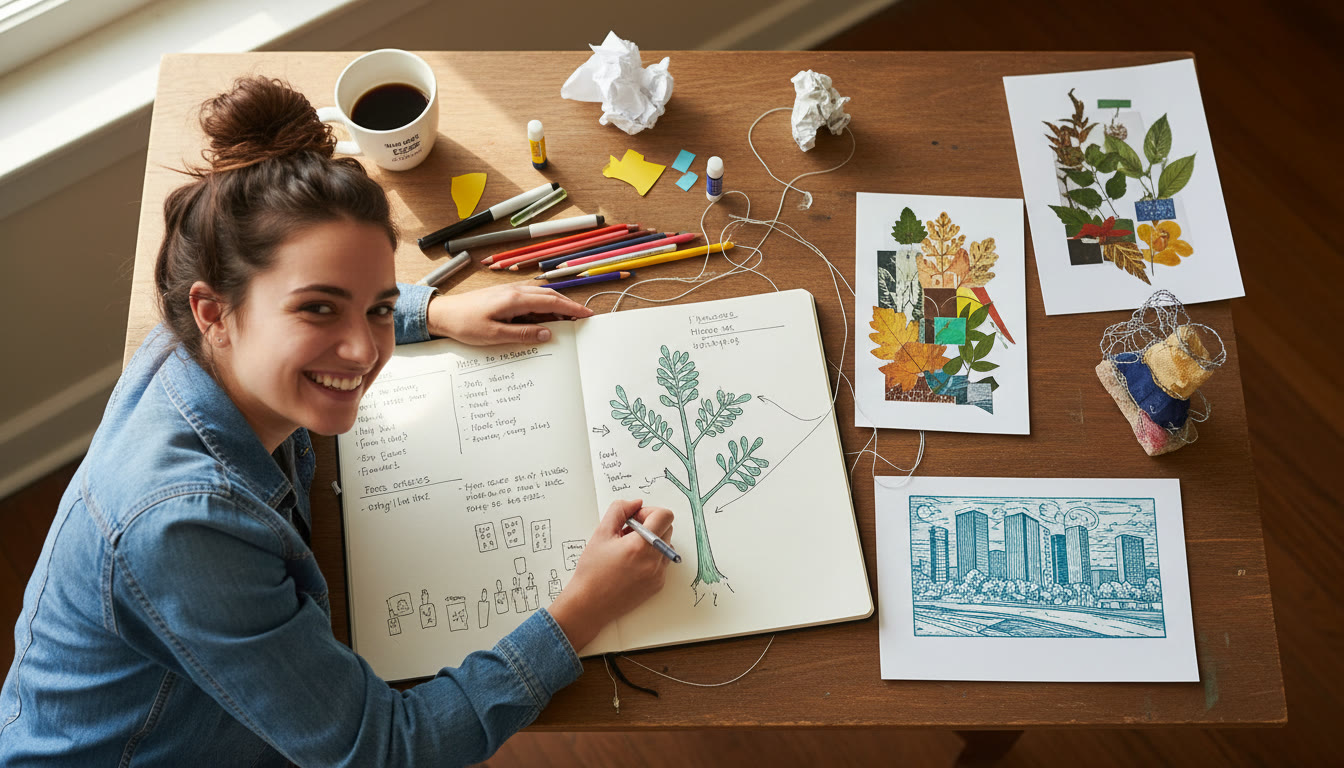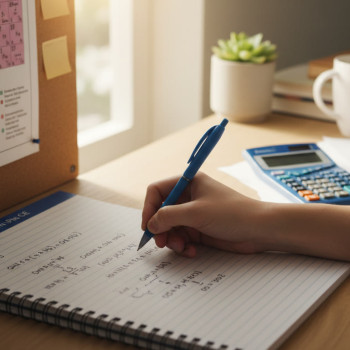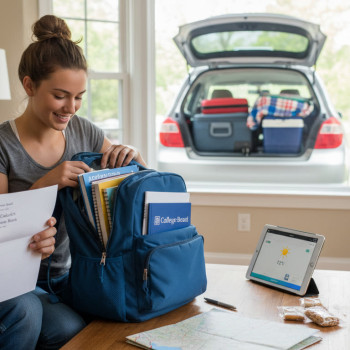Why This Guide Matters: your portfolio is the whole story
When you sit down to assemble your AP Art and Design portfolio, you’re not just turning in images — you’re telling a story about your growth as an artist. The portfolio is a conversation between your curiosity, your skills, and your ability to reflect. Unfortunately, many students trip over avoidable missteps that obscure that conversation. This post walks through the most common pitfalls students make with Sustained Investigation and Selected Works, explains why they matter, and gives clear, practical fixes so your work reads the way you intend.

Quick roadmap: what you’ll get from this article
- An overview of technical and artistic mistakes that lower portfolio clarity
- Actionable fixes you can apply in the final weeks before submission
- Practical tips for writing the Sustained Investigation written evidence
- How to present images and documentation so reviewers focus on your art, not distractions
- How personalized help—like one-on-one guidance and tailored study plans from Sparkl—can plug gaps quickly
Common Pitfall #1: Weak or Unfocused Sustained Investigation
The Sustained Investigation is the heart of your AP Art portfolio. It’s where you demonstrate practice, experimentation, and conceptual development. Yet many students submit a collection of nice pieces without a clear through-line. When the investigation feels scattered, readers can’t trace your thinking—so your work reads as isolated moments rather than a coherent trajectory.
Symptoms of a weak investigation
- Mixed themes that don’t connect conceptually (e.g., portraits, landscapes, and abstract patterns without an overarching inquiry)
- Surface-level experimentation—using different materials without showing development or problem-solving
- Missing or vague written evidence that fails to explain choices, setbacks, and growth
How to fix it
- Pick a focused inquiry question or theme. For example: “How does memory change through layered mark-making?” This guides selection and revision.
- Map progress over time. Create a simple timeline or a sketchbook index that connects early experiments to later resolved works.
- Document revision. Show one or two works in stages to demonstrate practice and adaptation—readers love to see learning in action.
- Write honestly. Use the written evidence to describe your investigative moves: what you tried, what failed, what you learned, and what changed.
Common Pitfall #2: Poor Image Quality and Documentation
No matter how accomplished the artwork, poor photography can mask subtleties and lead to misunderstandings. Crop issues, glare, wrong orientation, and inconsistent lighting make it harder for AP readers to assess scale, texture, and color relationships.
Checklist for clean documentation
- Use consistent lighting—soft, even natural light is ideal; avoid flash that creates hotspots.
- Show scale—include a ruler or a recognizable object, or list exact dimensions in the image metadata area.
- Crop thoughtfully—don’t cut off edges of works unless intentional. Keep background neutral and unobtrusive.
- Provide multiple views for 3-D works and installation shots when relevant.
- Keep filenames and sequence logical so your Selected Works tell the intended story.
Quick fixes if you’re short on time
- Set a small photoshoot area with a neutral wall or fabric backdrop and daylight from a window.
- Use a tripod or steady surface; even a stack of books can stabilize a phone camera.
- Edit only for clarity—crop, straighten, and adjust exposure. Don’t alter the artwork digitally.
Common Pitfall #3: Weak or Generic Descriptions in Selected Works
Selected Works asks you to explain materials, processes, and ideas for five pieces. Some students write basic, generic sentences that repeat information obvious from the image. Remember: reviewers are looking for depth and intentionality.
What reviewers want to see
- Concise descriptions of the material and process choices (why a medium was chosen and how it was used)
- Brief reflection on idea and context—what you intended and what you discovered
- Reference to influences or sources when relevant and properly cited
Example—before and after
Before: “Oil painting of a tree. Used oil paints and brushes.”
After: “Oil on canvas, 24 x 30 in. I used glazing and scumble techniques to create layered memory effects—building translucency to evoke the way trees hold seasonal histories. I chose oil for its blending capabilities and slow drying time, which allowed for reworking over two weeks.”
Common Pitfall #4: Neglecting Revision and Iteration
A polished portfolio is rarely the first draft of every piece. Iteration—trying, failing, rethinking, and revising—is central to the AP scoring rubric. Yet students sometimes submit early versions or pieces they’re done with rather than revisited work that demonstrates growth.
Make revision a visible part of your portfolio
- Include alternate studies or sketches that directly relate to final works.
- Explain what changed between versions and why—readers need the why, not just the what.
- Set aside time for intentionally revising at least two Sustained Investigation pieces; even small refinements signal reflective practice.
Common Pitfall #5: Overdependence on Trends or Filters
It’s tempting to lean into what’s popular—vintage filters, formulaic aesthetics, or viral templates. While contemporary references can be meaningful, reliance on trendy effects without conceptual purpose can make work feel derivative.
How to avoid trend-dependence
- Ask: “Does this effect serve my concept?” If the answer is no, cut it.
- Use trends as starting points for critical investigation rather than endpoints. For example, if you’re exploring internet culture, interrogate it rather than imitate it.
- Focus on voice. Distinctive choices—whether subtle mark-making or unusual material combinations—often separate strong portfolios from forgettable ones.
Common Pitfall #6: Missing Administrative and Submission Details
Technical compliance matters. Digital submission guidelines, required image counts, format rules, and deadlines are strict. Small errors here can prevent your portfolio from being scored or cause unnecessary stress.
Essential administrative checklist
| Requirement | What to Do | Why It Matters |
|---|---|---|
| Image counts | Confirm 15 Sustained Investigation images and 5 Selected Works images (or required counts for your portfolio type) | Missing images can lower your section score; counts differ by portfolio type. |
| Written evidence | Answer required prompts fully and honestly; save drafts separately | Incomplete written responses penalize the Sustained Investigation section. |
| File formats and sizes | Stick to the accepted file types and resolution guidelines; test uploads early | Large or wrong file types can fail to upload or be rejected. |
| Deadlines | Follow your teacher’s early deadline and the AP Program deadline | Late submissions typically won’t be scored. |
| Plagiarism and AI | Document your references, avoid uncredited appropriation, and do not use AI to create AP work | Academic integrity violations can disqualify submissions. |
Common Pitfall #7: Failing to Highlight Originality and Risk
AP readers reward students who take meaningful creative risks and show original thinking. Playing it safe—creating technically competent but predictable works—often fails to stand out.
How to incorporate risk thoughtfully
- Experiment with one unfamiliar material or process and document your learning curve.
- Take a conceptual risk: pursue an idea that challenges you and use the written evidence to frame that challenge.
- Balance comfort and stretch—showcase technical skill, but pair it with at least two works that push boundaries.
Common Pitfall #8: Overexplaining or Using Jargon in Written Evidence
While depth is important, overwriting can obscure the art. Some students try to impress with dense academic language when plain, reflective language would be clearer and more persuasive.
Write with clarity and honesty
- Lead with a clear statement of intent (one or two sentences).
- Use specific examples from your work to show development—”I tried X, discovered Y, and then adjusted by Z” reads better than abstract claims.
- Avoid filler. Let the images carry much of the evidence; the writing should illuminate, not restate.
How to Use Feedback Effectively
Feedback is a multiplier—when you know how to use it. But many students gather comments randomly or accept every suggestion, which can muddy their vision.
A practical feedback workflow
- Collect diverse feedback: teacher critiques, peer observations, and at least one outside perspective who isn’t emotionally invested (like a local artist or a mentor).
- Organize feedback into categories: technical fixes, conceptual clarity, and presentation tweaks.
- Prioritize changes that align with your inquiry. Not every suggestion improves your thematic focus.
- Keep a revision log that records what you changed and why—this can inform your written evidence later.
Scheduling: Don’t Leave Reflection to the Last Minute
Good portfolios emerge from cycles of making, reflecting, and revising. Last-minute tinkering often results in rushed documentation and weak written evidence. Build time into your schedule specifically for reflection and documentation.
Suggested timeline (final semester)
- Weeks 1–3: Finalize investigation theme; select candidate works
- Weeks 4–6: Produce and revise; photograph works; begin written evidence drafts
- Weeks 7–8: Consolidate Selected Works; finalize images and metadata
- Week 9: Peer review and targeted revisions
- Final week: Upload, confirm file integrity, and submit early to teacher for final check
Sparkl and Smart, Timely Support
Sometimes targeted help speeds everything up. One-on-one guidance can quickly identify blind spots in documentation or argumentation. For students who need a focused push—whether that’s help refining a Sustained Investigation question, polishing written evidence, or setting up professional-looking photos—Sparkl’s personalized tutoring and benefits like tailored study plans, expert tutors, and AI-driven insights can be an efficient way to level up without losing your voice. Use tutoring sessions to rehearse concise explanations of your works, workshop revision notes, and get feedback on presentation before you upload.
Layout and Sequence: Tell a Clear Visual Story
How your images are ordered affects how the reader experiences development. Think like a curator: sequence images to reveal process, tension, and resolution.
Sequencing strategies
- Start with an anchor piece—an artwork that clearly signals your theme.
- Follow with studies and experiments that show the trajectory of your inquiry.
- Place resolved works where they feel like conclusions—moments where your investigation synthesized ideas and process.
- Use the Selected Works section to highlight technical range and conceptual depth.
Common Pitfall #9: Not Citing Sources or Context
If your work references other artists, publications, or found images, acknowledge them. You don’t need formal APA citations for every inspiration, but transparency builds trust and helps readers understand lineage and intent.
How to cite without overcomplicating
- List the source or inspiration name and a brief note about how it informed your work.
- If you adapt or appropriate imagery, explain how you transformed it conceptually and materially.
- When using found images, identify their source in the image citation field to respect intellectual property.
Final Submission: A Final-Check Checklist
- Confirm all images are correctly labeled and show the artwork clearly.
- Verify written evidence answers the prompts and is saved in a backup.
- Double-check image counts, sizes, and formats.
- Ensure your portfolio does not contain personally identifying information where prohibited.
- Submit early to your teacher for a last review; don’t rely on the deadline day.

Final thoughts: make decisions that reveal your process
At its best, an AP Art portfolio feels like an honest, well-argued essay told in images and reflection. Small technical mistakes can distract from big ideas; shaky documentation can hide months of good work. But with focused inquiry, careful documentation, strategic revision, and clear written evidence, you can make a portfolio that communicates your artistic growth and intention effectively.
If you’re feeling overwhelmed, remember that focused help can make a huge difference in a short time. A few sessions of personalized tutoring—working on sequencing, polishing descriptions, and tightening your investigation—can transform a good portfolio into a compelling one. Sparkl’s one-on-one guidance, tailored study plans, and expert tutors are built precisely to help students refine those final details while keeping the work authentically theirs.
Action Plan: Your next 7 days
- Day 1: Choose your Sustained Investigation question and list 15 candidate images.
- Day 2: Set up a photo shoot area and photograph works needing better documentation.
- Day 3: Draft written evidence for Sustained Investigation and one Selected Work; keep it specific.
- Day 4: Get one focused critique and make prioritized revisions.
- Day 5: Sequence images and finalize metadata (materials, dimensions, process notes).
- Day 6: Run a technical upload test and confirm file integrity.
- Day 7: Submit to your teacher for final check and take notes on any last minute changes.
Parting encouragement
This process can be demanding, but it’s also one of the clearest opportunities you’ll have to show your growth as an artist in a concentrated way. Treat each hiccup as data: a photo that didn’t work, a prompt you didn’t fully answer, a piece that needs another pass—these are all fixable. Slow down, be intentional, and tell the story you want the reader to remember. Your portfolio is your voice—make sure it speaks clearly.
Good luck—create boldly, document honestly, and let your process shine.



















No Comments
Leave a comment Cancel